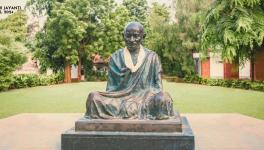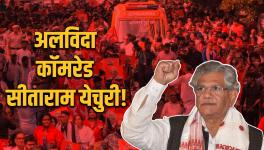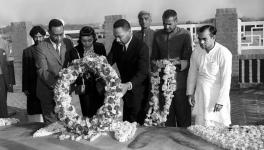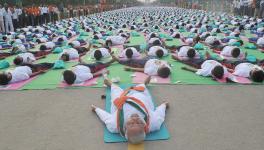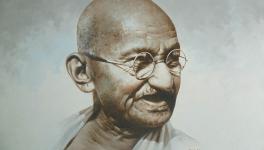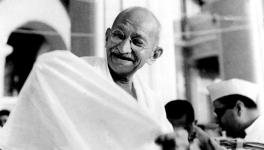Bhagwati Charan Vohra: Intellectual Giant of Indian Revolutionaries
Bhagwati Charan Vohra is among the lesser-known personages from the Bhagat Singh era of the Indian revolutionary movement. He was a chief pamphleteer and propagandist and among the most important ideologues of the movement. Though not as popular as Singh and Chandrashekhar Azad, he co-wrote three significant ideological/organisational documents—the manifestos of the Naujawan Bharat Sabha and Hindustan Socialist Republican Association and the most famous document of the HSRA, “The Philosophy of the Bomb”, which features a debate between revolutionaries and Mahatma Gandhi.
Vohra was born on 15 November 1902 in Lahore in an affluent business family from Gujarat that was initially pro-British. He married Durga Devi, who later joined the revolutionary movement at a very young age. The Jallianwala Bagh massacre had a profound impact on teenage Vohra, who plunged into the anti-colonial movement. As a student of the National College at Lahore, he participated in the Non-Cooperation Movement launched by Gandhi. Like many contemporaries, his revolutionary career began after the abrupt withdrawal of this movement after the Chauri-Chaura incident. The withdrawal was seen as a betrayal, especially by the college-going youth.
Disillusioned with Congress and Gandhi, Vohra began an intellectual journey in which Marxist thought especially impressed him, primarily because of the success of the 1917 Russian Revolution. He contacted the communist group of MN Roy in the Soviet Union and began smuggling and distributing “Vanguard”, the journal Roy edited, and other Marxist literature. However, at this time, the communists had just started to organise themselves in India. Vohra was drawn to the underground revolutionary movement led by the Hindustan Republican Association (HRA). He joined its Punjab unit under Jaichandra Vidyalankar, who had taught Vohra at the National College.
Vohra, Bhagat Singh and Sukhdev formed the Naujawan Bharat Sabha in 1926, an open mass front of the party and was elected its propaganda secretary. According to Shiv Verma, Vohra had written several booklets, small tracts, and pamphlets addressed to the Indian youth. One of his booklets, “Masses of India”, was very popular among the youth of Punjab. Unfortunately, none of these documents has survived the ravages of time. A voracious reader, Vohra came in contact with anarchist philosophy and was influenced by it. As his political ideas evolved, he produced a potent mix of Anarchist and Marxist ideas that became a guiding line for Indian revolutionaries in the late twenties. Vohra borrowed the concept of “Propaganda by the Deed”, popularised by anarchist philosophers Johann Most and Emma Goldman and produced a highly influential document justifying this concept in Indian conditions.
Critique of Communalism and Gandhian ideas
The state of Indian politics in the 1920s was very much similar to that of today. A communal consciousness was rising, riots plagued the country, the nascent Indian bourgeoisie and big landlords were in cahoots with the imperialist government, and the colonial state was ruthless towards its opponents and critics. Indian revolutionaries faced the multiple challenges of tackling communal politics and exposing the compromising character of the Indian National Congress while attacking the colonial state.
The Naujawan Bharat Sabha published its manifesto written by Vohra and his comrades with these concerns in mind. In the document, they make a scathing attack on communal politics and communal consciousness. One passage has a contemporary ring to it. Vohra writes, “…we Indians, what are we doing? A branch of peepal tree is cut and religious feelings of the Hindus are injured. A corner of a paper idol, tazia, of the idol-breaker Mohammedans is broken, and ‘Allah’ gets enraged, who cannot be satisfied with anything less than the blood of the infidel Hindus. Man ought to be attached more importance than the animals and, yet, here in India, they break each other’s heads in the name of ‘sacred animals’.” According to Vohra and the NBS, religious superstitions and bigotry were a hindrance to the progress of human society as they curtailed “free thought”. “Reason has little in common with faith” and therefore “the thing that cannot bear free thought must perish,” he wrote.
The intellectual brilliance of Vohra found expression in his most famous document, “The Philosophy of the Bomb”, co-written with Yashpal, as a response to Gandhi’s article, “The Cult of Bomb”, a critique of revolutionaries after they bombed viceroy Irwin’s train on 23 December 1929. In this brilliant six-page riposte, the revolutionaries attacked the compromising politics of the Congress and challenged the philosophical foundations of non-violence. They write: “…though it is true that the average leader confines his tours to places where only the mail train can conveniently land him while Gandhi has extended his tour limit to where a motorcar can take him, the practice of staying only with the richest people in the places visited…disqualifies him from claiming to know the mind of the masses.” Largely ignored by Indian scholars, this document is often cited by western researchers on “modern terrorism”. Inspired by Western imperialist ideas, they see Indian revolutionaries as precursors to modern-day terrorists, completely overlooking the terrorist nature of colonial rule itself.
Vohra, however, distinguishes the violence of the oppressor from that of the oppressed, giving a nuanced understanding of this complex ethical issue. According to him, the colonial subject, living under economic, social, political and cultural oppression, tends to lose self-confidence and identity. The consistent symbolic and physical violence of the oppressor creates severe anxiety and fear in the subject population. Revolutionary violence, according to Vohra, “...instils fear in the hearts of the oppressors, it brings hopes of revenge and redemption to the oppressed masses, it gives courage and self-confidence to the wavering, it shatters the spell of the superiority of the ruling class and raises the status of the subject race in the eyes of the world”.
Vohra anticipated the famous Marxist psychiatrist Frantz Fanon, who wrote about the emancipatory role of revolutionary violence for subject race or people in his celebrated book, Wretched of the Earth. For Vohra, the revolution did not just mean the overthrow of the British but also the removal of the native Indian capitalist and landlord class who exploited the Indian masses in alliance with the British colonial state. For him, the revolution would “mean more than a change of masters” as it will lead to “the birth of new order of things, a new state.” It meant a total transformation of the economic and political spheres along with the social-cultural and psychological realms. The manifesto of the HSRA also made similar arguments.
Supreme Sacrifice
Vohra lived a stoical life and embodied the motto of the Naujawan Bharat Sabha, “Service, Suffering, Sacrifice”. He was always eager to donate whatever money or other resources he had to the cause. Reminiscing about his comrade, Bejoy Kumar Sinha wrote that Vohra often used to say: “I want to die in such a place and manner that no one may know of it and shed tears”. In a cruel tragedy, history heeded his desire. He died on 28 May 1930 while testing a bomb near the Ravi river. He was buried hastily by tearful comrades, and over the years, faded from the memory of the nation.
Harshvardhan and Prabal Saran Agarwal are PhD scholars at JNU. The views are personal.
Get the latest reports & analysis with people's perspective on Protests, movements & deep analytical videos, discussions of the current affairs in your Telegram app. Subscribe to NewsClick's Telegram channel & get Real-Time updates on stories, as they get published on our website.









